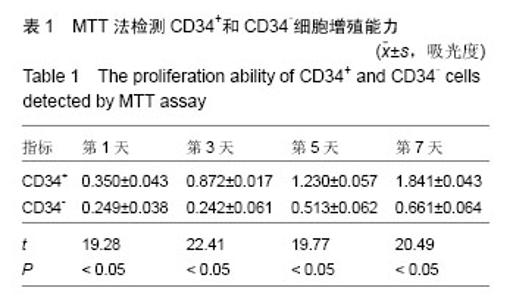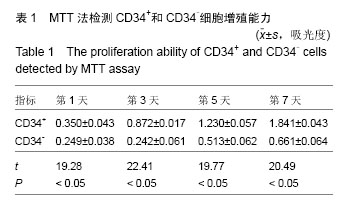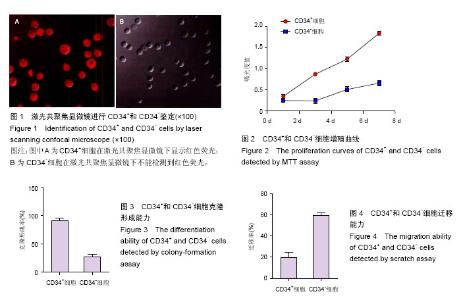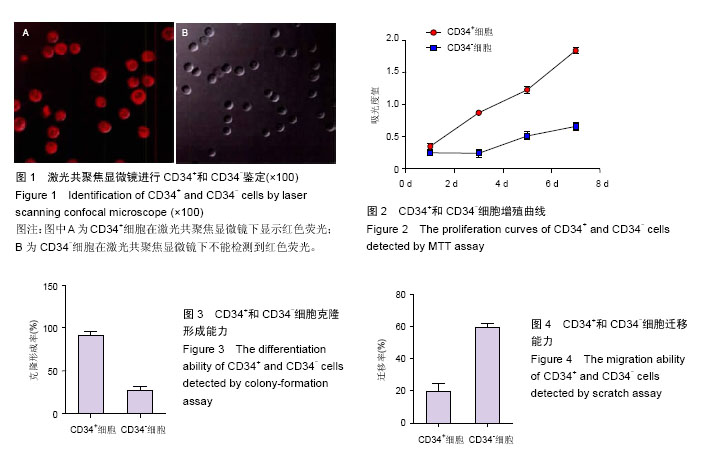| [1] 庞霞,郑湘予,李晟磊,等.CD31、CD34和CD105蛋白在食管鳞状细胞癌组织微血管中的表达及意义[J].山东医药, 2009,49(35):7-9.
[2] Chen Y, Orlicky DJ, Matsumoto A, et al. Aldehyde dehydrogenase 1B1 (ALDH1B1) is a potential biomarker for human colon cancer. Biochem Biophys Res Commun. 2011;405(2):173-179.
[3] 王桂兰,陈莉,李杏玉,等.NET-1、Ki67和CD34在胃癌组织中的表达及其临床病理意义[J].肿瘤防治研究,2009, 36(3): 216-220.
[4] van den Hoogen C, van der Horst G, Cheung H, et al. High aldehyde dehydrogenase activity identifies tumor-initiating and metastasis-initiating cells in human prostate cancer. Cancer Res. 2010;70(12):5163-5173.
[5] Zhang W, Yan W, You G, et al. Genome-wide DNA methylation profiling identifies ALDH1A3 promoter methylation as a prognostic predictor in G-CIMP- primary glioblastoma. Cancer Lett. 2013;328(1):120-125.
[6] Akalay I, Janji B, Hasmim M, et al. Epithelial-to- mesenchymal transition and autophagy induction in breast carcinoma promote escape from T-cell-mediated lysis. Cancer Res. 2013;73(8):2418-2427.
[7] Mao P, Joshi K, Li J, et al. Mesenchymal glioma stem cells are maintained by activated glycolytic metabolism involving aldehyde dehydrogenase 1A3. Proc Natl Acad Sci U S A. 2013;110(21):8644-8649.
[8] El-Khattouti A, Selimovic D, Haïkel Y, et al. Identification and analysis of CD133(+) melanoma stem-like cells conferring resistance to taxol: An insight into the mechanisms of their resistance and response. Cancer Lett. 2014;343(1):123-133.
[9] 王苏萍,杜标炎,张广献.自杀基因疗法治疗黑色素瘤的研究进展[J].广州中医药大学学报,2013,30(3):433-436.
[10] 吕俊杰,陶秀娟.恶性黑色素瘤的治疗研究进展[J].中国肿瘤,2012,21(8):606-610.
[11] Civenni G, Walter A, Kobert N, et al. Human CD271-positive melanoma stem cells associated with metastasis establish tumor heterogeneity and long-term growth. Cancer Res. 2011;71(8):3098-3109.
[12] Prasmickaite L, Skrbo N, Høifødt HK, et al. Human malignant melanoma harbours a large fraction of highly clonogenic cells that do not express markers associated with cancer stem cells. Pigment Cell Melanoma Res. 2010;23(3):449-451.
[13] 韩苏军,张思维,陈万表,等.中国前列腺癌发病现状和流行趋势分析[J].临床肿瘤学杂志,2013,18(4):330-334.
[14] 何跃,秦国东,肖明朝.前列腺癌生物标志物筛查的临床研究现状[J].中华男科学杂志,2011,17(11):1029-1032.
[15] 罗勇,崔新浩,姜永光,等.细胞株源人前列腺肿瘤干细胞的分选与鉴定[J].中华男科学杂志,2012,18(12):1062-1068.
[16] Petkova N, Hennenlotter J, Sobiesiak M, et al. Surface CD24 distinguishes between low differentiated and transit-amplifying cells in the basal layer of human prostate. Prostate. 2013;73(14):1576-1590.
[17] 禚银玲,李世云,赵晨睛,等.洛铂联合依托泊苷治疗广泛期小细胞肺癌的临床疗效观察[J].山东医药,2012,52(14): 61-62.
[18] 高文斌,邓蓉,韩佩妍,等.洛铂对肺癌HTB-56、HTB-56/ DDP细胞株生长抑制作用的研究[J].中华肺部疾病杂志:电子版,2012,5(2):137-140.
[19] Kinehara Y, Minami T, Kijima T, et al. Favorable response to trastuzumab plus irinotecan combination therapy in two patients with HER2-positive relapsed small-cell lung cancer. Lung Cancer. 2015;87(3): 321-325.
[20] Enomoto Y, Kenmotsu H, Watanabe N, et al. Efficacy and Safety of Combined Carboplatin, Paclitaxel, and Bevacizumab for Patients with Advanced Non-squamous Non-small Cell Lung Cancer with Pre-existing Interstitial Lung Disease: A Retrospective Multi-institutional Study. Anticancer Res. 2015;35(7):4259-4263.
[21] Xie CY, Xu YP, Jin W, et al. Antitumor activity of lobaplatin alone or in combination with antitubulin agents in non-small-cell lung cancer. Anticancer Drugs. 2012;23(7):698-705.
[22] 蒋侃,黄诚,吴标,等.伊立替康联合洛铂治疗复发广泛期小细胞肺癌临床观察[J].中国实用医药,2011,6(18):1-2.
[23] 向立丽,李曼,顾伟英,等.急性髓系白血病患者miRNA- 181b表达特点及预后意义[J].临床内科杂志, 2013,30(6): 417-419.
[24] He L, Yao H, Fan LH, et al. MicroRNA-181b expression in prostate cancer tissues and its influence on the biological behavior of the prostate cancer cell line PC-3. Genet Mol Res. 2013;12(2):1012-1021.
[25] 石磊,钱进,程子昊,等.miR-181a和miR-181b抑制胶质瘤细胞的增殖和侵袭[J].中华神经外杂志,2010,26(4):365- 368.
[26] Shen Y, Zhu YM, Fan X, et al. Gene mutation patterns and their prognostic impact in a cohort of 1185 patients with acute myeloid leukemia. Blood. 2011;118(20): 5593-5603.
[27] Whitman SP, Maharry K, Radmacher MD, et al. FLT3 internal tandem duplication associates with adverse outcome and gene- and microRNA-expression signatures in patients 60 years of age or older with primary cytogenetically normal acute myeloid leukemia: a Cancer and Leukemia Group B study. Blood. 2010; 116(18):3622-3626.
[28] Zheng YS, Zhang H, Zhang XJ, et al. MiR-100 regulates cell differentiation and survival by targeting RBSP3, a phosphatase-like tumor suppressor in acute myeloid leukemia. Oncogene. 2012;31(1):80-92.
[29] Kumar S, Naqvi RA, Khanna N, et al. Disruption of HLA-DR raft, deregulations of Lck-ZAP-70-Cbl-b cross-talk and miR181a towards T cell hyporesponsiveness in leprosy. Mol Immunol. 2011; 48(9-10):1178-1190.
[30] Takahashi K, Ishii Y. Asbestos and the Industrial Safety and Health Law - in reference to the ordinance on prevention of hazards due to specified chemical substances and the ordinance on prevention of health impairment due to asbestos. J UOEH. 2013;35 Suppl: 121-126.
[31] Håkansson A, Bränning C, Molin G, et al. Blueberry husks and probiotics attenuate colorectal inflammation and oncogenesis, and liver injuries in rats exposed to cycling DSS-treatment. PLoS One. 2012;7(3):e33510.
[32] Liu XL, Li FQ, Liu LX, et al. TNF-α, HGF and macrophage in peritumoural liver tissue relate to major risk factors of HCC Recurrence. Hepatogastroenterology. 2013;60(125):1121-1126.
[33] 黄莹,韩双印.嵌合抗原受体基因修饰T淋巴细胞在肿瘤免疫治疗中的研究进展[J].中华实验外科杂志,2011,28(10): 1812-1814.
[34] 赵嫄,胡婉丽,张连生.嵌合抗原受体疗法在血液肿瘤免疫治疗中的研究进展与应用前景[J].中华临床医师杂志:电子版,2014,8(6):1158-1161.
[35] 张鸿声.嵌合抗原受体T细胞肿瘤治疗的前生、今世和将来[J].转化医学杂志,2014,3(3):129-133.
[36] 蔡慧,赵莲君,邹征云.嵌合抗原受体基因修饰T淋巴细胞在肿瘤免疫治疗中的研究[J].现代肿瘤医学,2014, 22(11): 2730-2734.
[37] Mihara K, Bhattacharyya J, Kitanaka A,et al. T-cell immunotherapy with a chimeric receptor against CD38 is effective in eliminating myeloma cells. Leukemia. 2012;26(2):365-367.
[38] Tettamanti S, Marin V, Pizzitola I, et al. Targeting of acute myeloid leukaemia by cytokine-induced killer cells redirected with a novel CD123-specific chimeric antigen receptor. Br J Haematol. 2013;161(3):389-401.
[39] 钱磊,崔久嵬.嵌合型抗原受体基因修饰的 T 细胞研究进展[J].中国免疫学杂志,2014,30(6):850-853,857.
[40] Kim YJ, Kim HC, Ko H, et al. Stercurensin inhibits nuclear factor-κB-dependent inflammatory signals through attenuation of TAK1-TAB1 complex formation. J Cell Biochem. 2011;112(2):548-558. |



